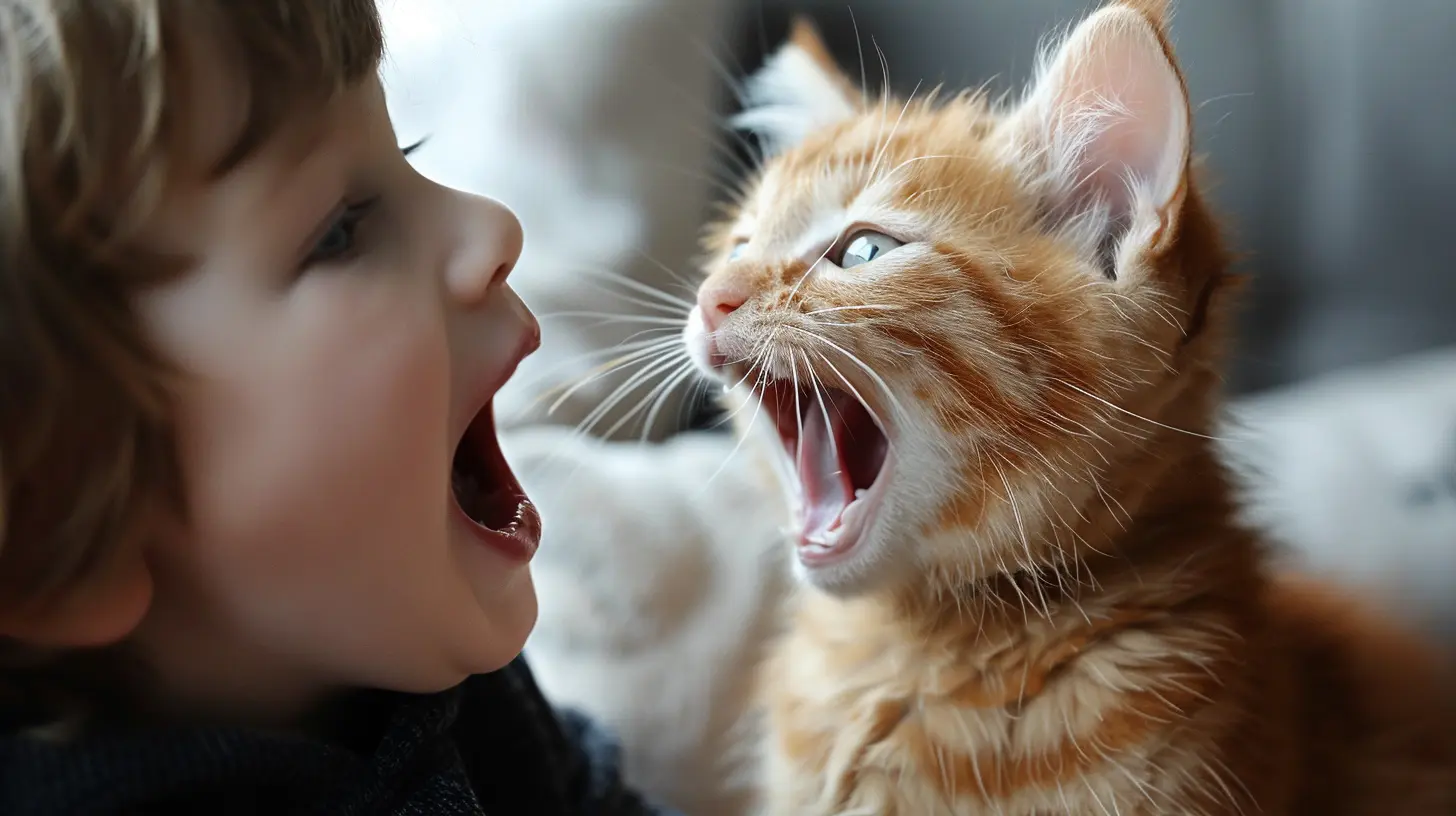Managing Public Tantrums Without the Stress
15 September 2025
We've all been there—standing in the middle of a grocery store, at a family gathering, or in the checkout line when suddenly, our little one erupts into a full-blown meltdown. The stares, the whispers, the overwhelming sense of helplessness—handling public tantrums can feel like an impossible task.
But here's the good news: You can manage these outbursts without feeling completely stressed out. With the right approach, you’ll not only handle tantrums better but also help your child learn self-regulation. So, let’s dive into how you can stay calm, respond effectively, and walk away from public meltdowns with your sanity intact.

Why Do Kids Have Public Tantrums?
Before tackling the issue, it's important to understand why tantrums happen.Children, especially toddlers, are still learning how to handle big emotions. They don’t have the vocabulary or emotional regulation skills to express frustration, exhaustion, or disappointment. So, what do they do? They explode.
Public tantrums often happen because:
- They’re overstimulated – Bright lights, loud noises, and too many people can be overwhelming.
- They’re tired or hungry – A cranky, hungry child is a meltdown waiting to happen.
- They feel powerless – Kids want to make their own choices, and being told “no” can be frustrating.
- They need attention – If kids feel ignored, a tantrum is a quick way to get noticed.
Understanding these triggers helps us respond with patience rather than frustration.

Staying Calm: The First Step in Tantrum Management
Your child isn’t the only one who needs to manage emotions during a tantrum—you do, too. It’s hard, but staying calm is critical. After all, if you lose control, how can you expect your child to calm down?Breathe Before You React
Take a deep breath before responding. Inhale for four seconds, hold for four, and exhale for four. This simple trick helps reset your nervous system and keeps you from reacting out of frustration.Ignore the Judgmental Stares
Yes, people will look. Some will judge, some will sympathize, and some won’t care at all. But here’s the thing: Their opinions don’t matter. Your focus is on your child, not the spectators.Remind Yourself: It’s Not Personal
Your child isn’t throwing a tantrum to embarrass you. They’re struggling with emotions they don’t know how to control. When you view it this way, it’s easier to respond with empathy rather than frustration.
Handling the Tantrum in the Moment
Once you've grounded yourself, it's time to handle the tantrum in a way that minimizes stress and restores calm.Acknowledge Their Feelings
Instead of immediately trying to stop the tantrum, acknowledge what your child is feeling. Say something like:- “I know you’re upset because we couldn’t buy that toy.”
- “I see that you're frustrated that we have to leave the playground.”
Validating their emotions lets them know they’re heard and understood.
Speak Calmly and Stay Firm
Keep your voice steady and low. Getting louder or arguing won’t help—it just escalates the situation. Be firm with your boundaries:- “I hear that you really want it, but we aren’t buying that today.”
- “I understand you’re upset, but it’s time to go now.”
Firmness coupled with a calm demeanor lets your child know that tantrums won’t change the outcome.
Offer a Simple Choice
A little control can go a long way in stopping a meltdown. Offer two choices:- “You can hold my hand, or you can ride in the cart.”
- “Would you like to take deep breaths with me, or have a hug?”
This gives them agency over the situation without giving in to demands.
Use Distraction or Humor
Sometimes, shifting their focus is all it takes. Try:- Pointing out something interesting: “Wow, did you see that big truck outside?”
- Making a silly face: Laughter can break the tension.
- Giving them a small task: “Can you help me find the apples?”
Distraction works because it moves their brain away from the emotional storm and onto something else.

When to Remove Your Child from the Situation
If your child’s meltdown is explosive and they’re inconsolable, it may be best to step away.Find a quieter place like a restroom, a bench outside, or your car, and let them calm down in a more private space. This prevents the tantrum from escalating and gives both of you breathing room.
Preventing Future Public Tantrums
While you can’t stop every tantrum, there are things you can do to minimize them.1. Keep Their Basic Needs in Check
- Bring snacks and water.- Plan outings when they’re well-rested.
- Avoid long trips that might be too overwhelming.
A well-fed, well-rested child is far less likely to melt down.
2. Prepare Them in Advance
If they know what to expect, they’ll be less likely to resist. Before heading out, explain:- Where you’re going
- How long you’ll be there
- What behavior you expect
For example, “We’re going to the grocery store to get food. You can help me pick out fruits, but we won’t be buying any toys today.”
3. Give Them Small Jobs
Keeping kids engaged can prevent boredom-induced tantrums. Let them:- Hold the shopping list
- Pick out an item from the shelf
- Push the stroller
When they feel useful, they’re less likely to act out.
4. Teach Emotional Regulation Skills
Help your child name and manage emotions outside of tantrum moments. Practice deep breathing, counting to ten, or using words to express frustration. Over time, they’ll start handling disappointment better.5. Reward Positive Behavior
Praise them when they do well:- “I loved how nicely you walked through the store today. Great job!”
- “You did an awesome job waiting patiently. Let's high-five!”
Positive reinforcement encourages good behavior in the future.
Give Yourself Grace
No matter how prepared you are, there will still be difficult moments. Every parent faces public tantrums—it’s part of the journey. The key is not striving for perfection but handling these moments with as much patience and love as possible.So the next time your child has a public meltdown, remember: You’ve got this. Stay calm, handle the situation with confidence, and keep moving forward. And if it all goes south? There's always coffee (or chocolate) waiting for you at home.
all images in this post were generated using AI tools
Category:
Tantrum TipsAuthor:

Maya Underwood
Discussion
rate this article
1 comments
Rusty Valentine
Loved this article! Managing public tantrums can be so challenging, but your tips make it feel much more manageable. Thank you for sharing practical strategies that can really help parents stay calm and confident in tough moments!
September 24, 2025 at 3:16 AM

Maya Underwood
Thank you so much for your kind words! I'm glad you found the strategies helpful. Staying calm in tough moments is key!


